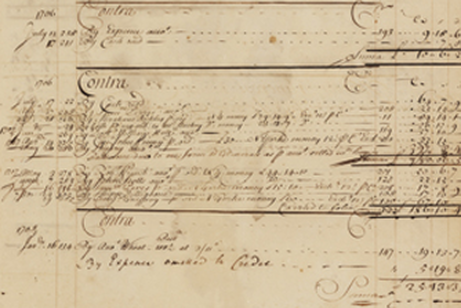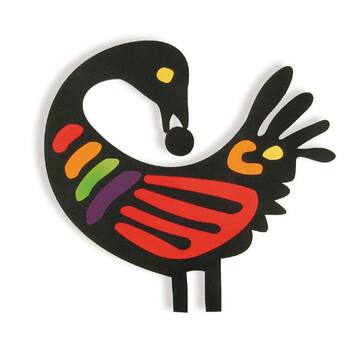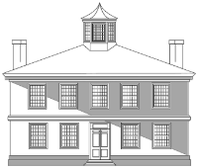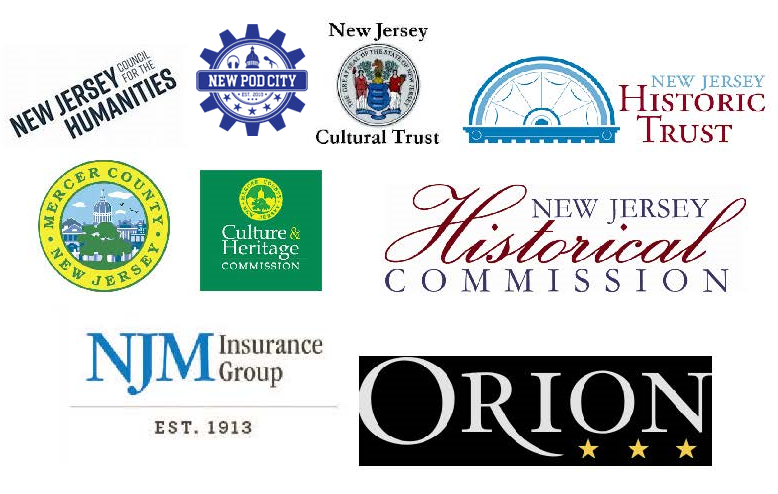Interpreting Slavery
|
The enslavement of people of African descent and the legacy of slavery is part of the history of the Trent House as well as of our state and nation. We know from Mahlon Stacy’s will that, though a Quaker, this first European colonist to settle on the land that Trent acquired for his plantation enslaved people. (Learn more about Stacy here.) Trent’s trade ledgers in the archives of the Historical Society of Pennsylvania list a number of his transactions buying and selling enslaved people to customers in Philadelphia and the West Indies. For a depiction of how this linked Trent with other prominent Philadelphians of the time, see here. |
The inventory of Trent’s estate conducted after his death lists eleven enslaved people – six men (Yaff, Julius, Bossin, Harry, Cupid, and Pedro), one woman (Joan), two boys (Bob and Dick), one girl (Nanny), and one male child (Tom). Research on the subsequent owners and tenants of the House confirms that slavery continued to be a feature of the House’s history.
|
While often painful, we are continuing to learn about and present what we know about slavery to our visitors through our tours, exhibits, and programs. Our work in this area has been recognized in a National Endowment for the Humanities project, People Not Property, conducted by Historic Hudson Valley. This project included the Trent House Museum as one of twenty historic sites interpreting slavery in the northern colonies. You can visit the People Not Property site here.
The Trent House Association is also honored to be a founding partner in the Sankofa Collaborative, along with its partners, 1804 Consultants, the Stoutsburg Sourland African American Museum, and the Grounds For Sculpture. Following the Collaborative’s first invitational symposium in January 2017, the Collaborative has held numerous workshops for wide-ranging audiences with the goal of helping individuals in schools, museums, libraries, cultural institutions, and civic groups present, interpret, and discuss African American history. You can visit the Sankofa Collaborative site here. |
To help our visitors understand about slavery as it existed in colonial New Jersey, a number of exhibits are on display and discussed during tours of the House. These include mannequins representing Yaff dressed in livery as the butler and Joan as the cook in the kitchen; displays of personal items that enslaved people of the time might well have had and used; replicas of typical food stuffs given as rations to enslaved people along with information about deficiencies in calories and nutrients that this diet would have produced. Underway is a video discussing the challenges that the enslaved people named in Trent’s inventory would have faced at the time of his sudden death. The estate remained unsettled for a considerable period and their fate would have been uncertain, determined by those who claimed ownership of them. We know only that Yaff was sold to James Alexander, one of the executors of Trent’s estate, from a runaway advertisement in mid- 1729. Click here to read more under "After Trent's Death."
To learn more about our work interpreting slavery and presenting information on the enslaved people in Trent’s household, please view this recent presentation on enslavement in colonial New Jersey. What we can learn about enslaved people from runaway advertisements is described in this 2018 presentation by Shawn Carney, Trent House docent and researcher.
To learn more about our work interpreting slavery and presenting information on the enslaved people in Trent’s household, please view this recent presentation on enslavement in colonial New Jersey. What we can learn about enslaved people from runaway advertisements is described in this 2018 presentation by Shawn Carney, Trent House docent and researcher.












